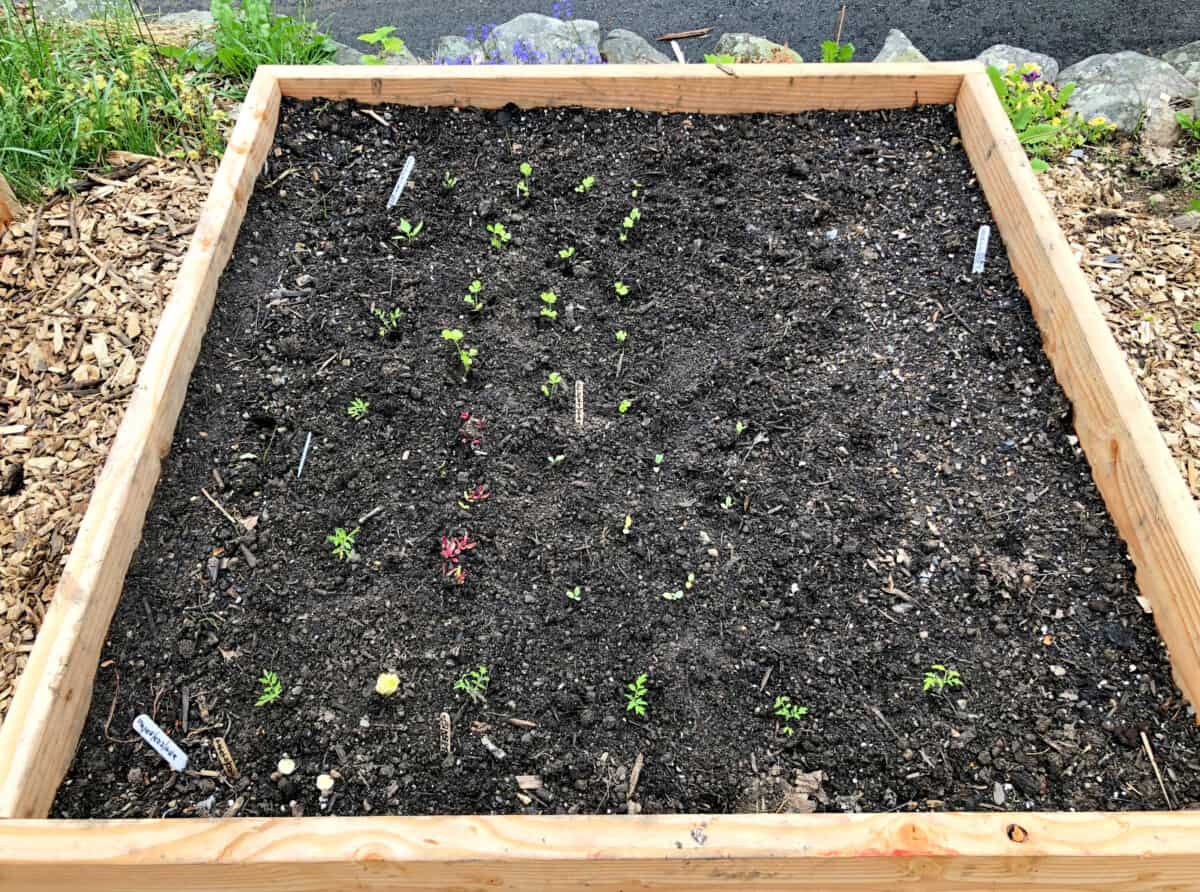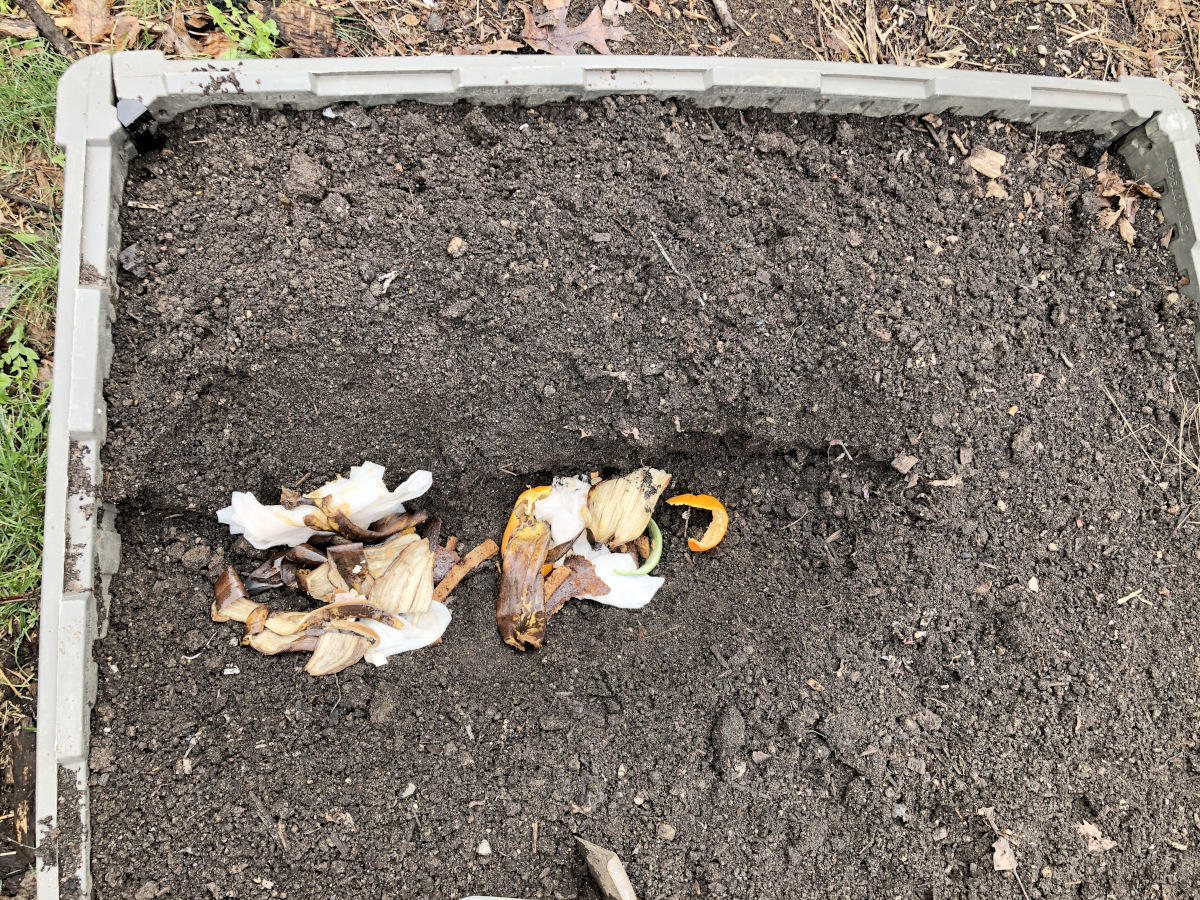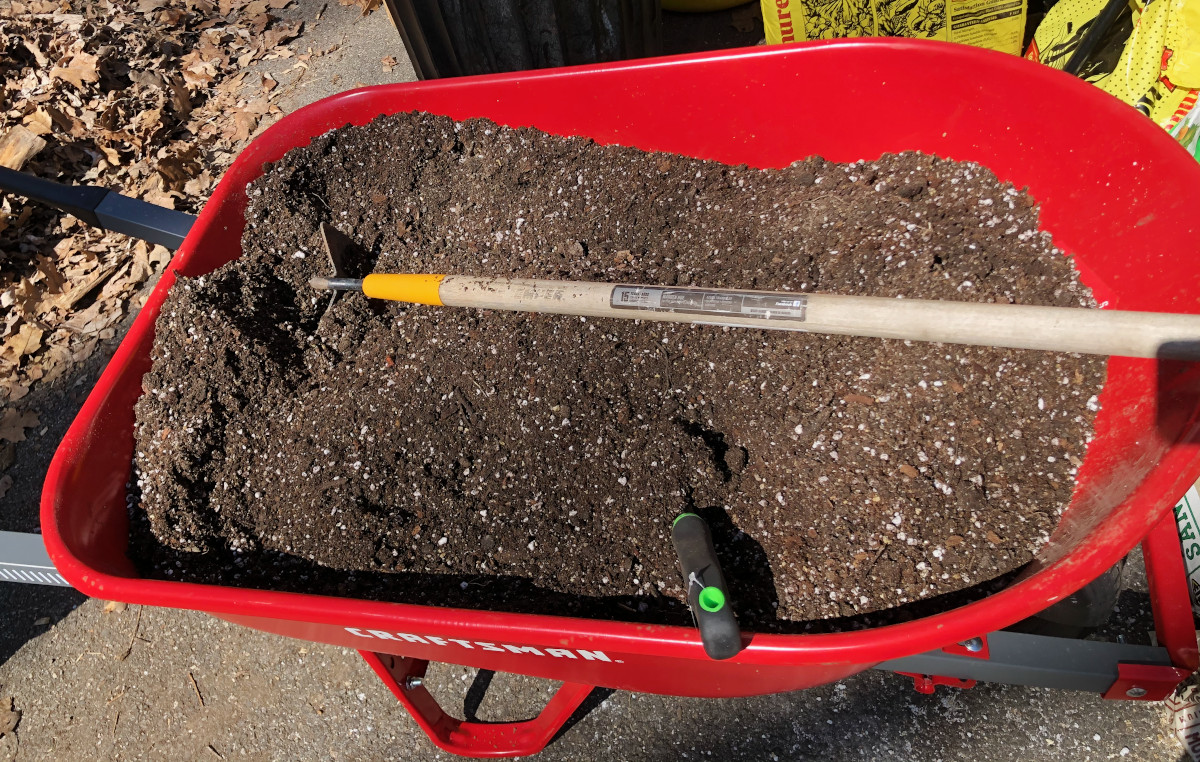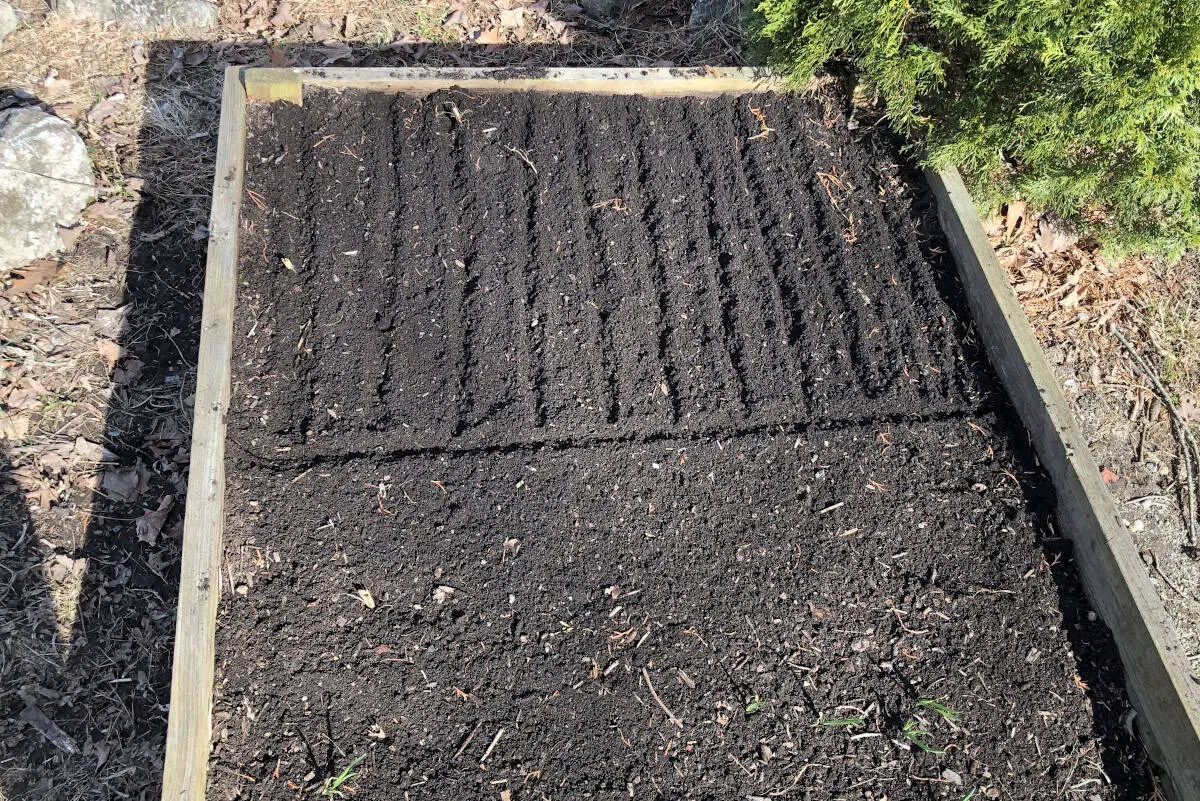Old raised bed soil looks tired and sunk in the garden bed. There are several ways to restore raised bed soil. Let us take a look at what one can do to restore raised bed soil back to health, life, and fertility.
To restore raised bed soil, amend the soil using organic and inorganic soil amendments, use trench composting directly in the garden bed, and plant cover crops. To make the raised bed soil fertile again, add nutrients by adding compost, worm castings, leaf mould, and aged animal manure. To restore the soil structure, add inorganic amendments such as vermiculite, coarse sand, perlite, and rock sand to add minerals.

Over time, organic matter in the soil decomposes and compresses. This makes the soil in garden beds sink down. The soil might become compressed and might need tilling. Till the soil if needed.
What is trench composting?
Trench composting is burying organic matter like kitchen scraps, leaves, grass clippings, or weeds in a trench directly in the garden bed.
Trench composting is my favorite way to restore raised bed soil. Living in an area with abundant wildlife including black bears, raccoons, chipmunks, and skunks, I cannot simply dump my kitchen scraps in a compost pile. This would attract wildlife and soon I would have a backyard full of bears munching on my kitchen scraps. The best way for me to get rid of kitchen scraps is to bury them. While they are buried in the garden bed, they decompose and feed my soil life including worms and beneficial fungi.
Trench composting lets me get rid of sight of what I do not want anyone to see. It is composting without any smell and does not attract rodents and wildlife into your garden.
I use trench composting from late autumn as soon as I have my garden beds harvested, till spring when I fill my garden beds with seeds and seedlings.
Trench composting allows me to compost during winter months. I use that nothing-to-do in the garden for long months to improve my garden soil. I still can dig in the soil in winter, yay!
How to trench compost
Dig a hole or a trench directly in the raised garden bed and dump in kitchen scraps, paper towels, egg shells, grass clippings, leaves, or weeds. Cover and fill the hole or a trench with soil. Water, or let the rain do the work for you. Over time the organic matter will decompose and feed the soil life while improving the soil itself.

Every spring, I know my garden beds are well fertilized and improved because I did trench composting, and enough time passed for all the goodness underneath to decompose and turn into beneficial organic matter. I have beds full of worms and soil life. What did not have time to decompose is deep enough so I do not have to worry as I plant my seeds of seedlings. Whatever is beneath the plant or seeds will continue to decompose and feed my plants as they mature.
What to add to trench compost?
Organic matter green, and brown such as kitchen scraps from fruit and vegetables like peels, whole gone-bad vegetables, and fruit, leafy greens, egg shells, paper towels, and shredded paper, can be trench composted.
What not to trench compost?
Do not trench compost meat, or dairy such as milk, sour cream, yogurt, oil, bones, candy, fatty foods, and pastry. These should not be added to any compost pile or trench composting.
What is the best cover crop for raised beds?
The best cover crops for raised beds are the ones that grow fast and have a large root system to add biomass below the soil and above it. Some of the best cover crops for raised beds include clover, hairy vetch, and ryegrass.
The best time to plant cover crops is in autumn as cover crops will have enough time to grow, mature and decompose before planting season. In spring, the soil in raised beds will be rejuvenated and full of organic matter.
During the winter season, the soil will remain covered and protected from depletion. The cover crop will also help retain moisture in the soil while providing a habitat for many soil organisms.
How do you restore raised bed soil quickly?
To restore raised bed soil quickly, organic and inorganic soil amendments can be mixed in with the soil. Organic matter such as compost, leaf mould, aged manure, and worm castings will add nutrients. Inorganic matter such as perlite, vermiculite, coarse sand, and rock dust, trace minerals. Add fertilizer to restore soil fertility.

To restore my raised beds, every year by trench composting in them. Once I finished trench composting the garden bed I dress it with compost from my cold compost pile, add shredded leaves that I rake in the autumn, and shred them using a weed wacker. I like to add aged manure as well to the mix. I mix it all together and dress the top of my garden bed with it.
I use electric Makita leaf blower and electric Makita weed wacker. They are much lighter than the gas ones and to me, easier to work with. I have extra battery charcing at all times so I they are ready to go as needed. Get teh whole electric Makita kit including leaf blower, weed wacker and battery charger here. Get extra batteries here.
To improve the structure of the soil, I like to add to the dressing mix some pearlite, vermiculite, coarse sand, and peat moss as these make my soil fluffier, and help retain water better while keeping my soil less compacted. I also add rock dust.
Then in spring, my garden beds have beautiful, dark, loamy soil full of organic matter that is easy to work with.
Does the soil in raised beds need to be replaced?
The soil in the raised beds does not need to be replaced but rather amended or top-dressed. Refresh the raised bed soil using organic and inorganic soil amendments. Mix the soil with organic amendments such as compost, aged animal manure, peat moss, and worm castings. To improve the structure and water drainage and retention add vermiculite, perlite, and coarse sand as needed. If you wish to refresh the raised bed soil without tilling, top dress the garden bed soil with organic and inorganic material layering them on top of the soil in layers or mixing them together, then layer the mix on top of the soil. Replace, or sterilize the soil in a raised bed only if the soil carries diseases that would spread to the healthy plants, or to the rest of the garden.

Please share with me and the readers what is your preferred method of restoring soil in your raised beds or containers.

